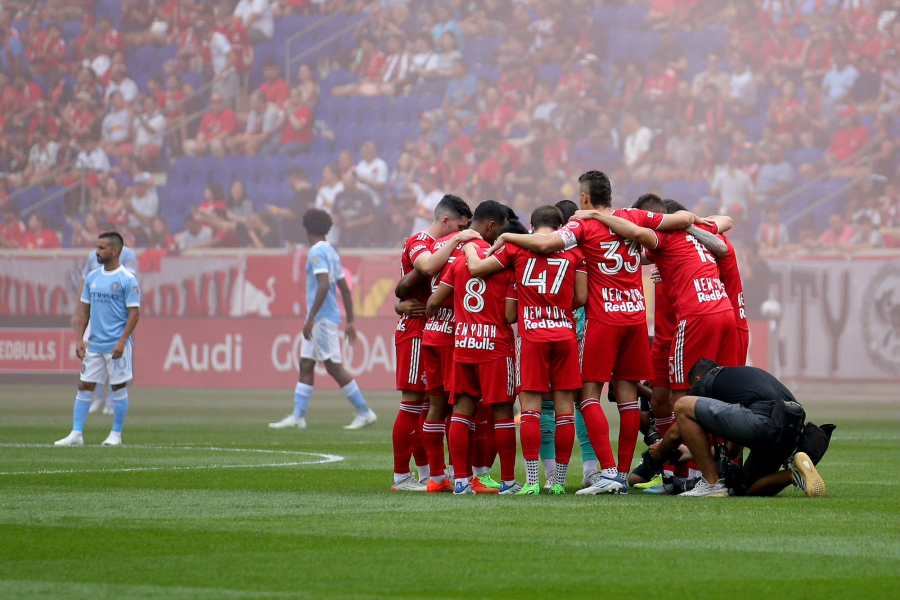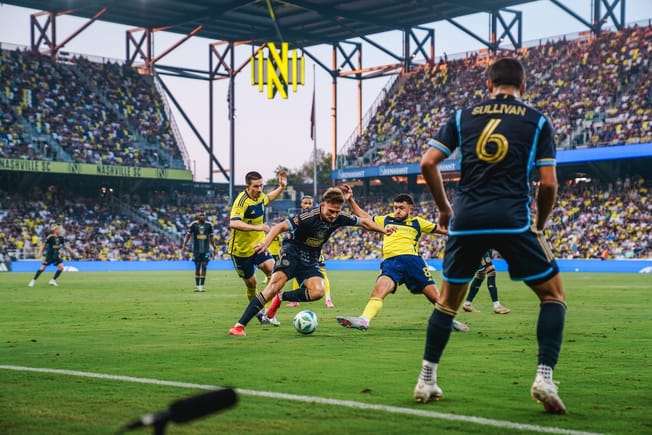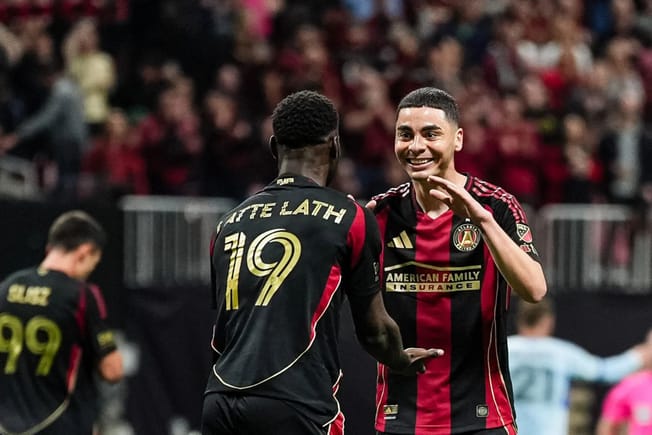Tyler Adams has just arrived in the Leeds United locker room for the very first time.
The leader of the United States’ midfield enters a scene that would have been utterly unimaginable in the Premier League even just a couple of years ago. Adams, whose time with the New York Red Bulls in MLS helped him jump up to soccer’s highest levels, is greeted by three familiar faces who also developed in MLS: Brenden Aaronson (Philadelphia Union), Jack Harrison (New York City FC), and his former manager Jesse Marsch (New York Red Bulls).
All Leeds aren’t we? #ALAW #MOT pic.twitter.com/ote6MVuZPf
— Tyler Adams (@tyler_adams14) July 6, 2022
Our friends across the pond may be surprised at the rapid infiltration of American soccer at Elland Road. But for those who follow MLS closely, helping players and coaches move over to Europe is becoming par for the course. Adams, Aaronson, Harrison, and Marsch aren’t just any four MLS figures, though. There’s a common thread that ties them together: they all shined in MLS with the three top teams in the Eastern Conference (Philadelphia, New York, and New York City).
And all three of those teams like to press.
In fact, if you zoom out and look at the top of the Western Conference right now with Los Angeles FC and Austin FC, the top five contenders for the Supporters’ Shield all use pressing as a core part of their identity.
The heavy use of the press isn’t a new idea in MLS. It’s been a staple for Peter Vermes for years and it helped Sporting Kansas City win MLS Cup in 2013. In 2015, it became a foundation for the New York Red Bulls when Marsch was installed by the Red Bull mothership to implement Ralf Ragnick’s gegenpressing system.
Pressing isn’t new. What is new, though, is how prevalent it’s become among the best teams in MLS. Between the figures that MLS is sending to Europe and how the league’s top teams win games, we’re witnessing the press become MLS’s – and maybe even American soccer’s – defining tactic.
WHY PRESS IN MLS?
The basic idea behind the press is that when you apply heavy pressure on the opposing team’s possession, those opponents have to make quicker decisions on the ball. The reduced reaction time means that players have a shorter span to find the correct pass. When they don’t find the correct pass, the pressing team can capitalize on mistakes and generate turnovers. When this happens, the pressing team can often create really high-quality scoring chances.
Now, the reasoning behind why MLS’s elite teams have adopted press-heavy tactics also has to do with the structure of the league.
MLS is probably the weirdest league in the world when it comes to complicated roster mechanisms. There’s a salary cap. There are Designated Players. There’s something called the U22 Initiative. Oh, and don’t forget about allocation money. Because teams are forced to use these roster mechanisms, gameday squads feature players of disparate quality. That’s where the press comes into play.
Soccer is a weak-link sport. Teams are only as good as their worst players. To beat the press, you need passing sequences that will involve every player over the course of a single game. If one player in that passing chain is more prone to making mistakes, the press will amplify this weakness and make it more likely for that mistake-prone player to make a mistake.
Because MLS’s roster mechanisms make it more likely to see vastly different skill sets on the field at the same time, it’s easy to see why the elite teams are ramping up the press. They’re looking to find and exploit weak spots.
DIFFERENT PRESSING STYLES
When you analyze how the elite teams in MLS press, you see two contrasting styles. On one side, you have the New York Red Bulls and the Philadelphia Union. For these two teams, the main purpose of the press is to generate attacking chances. The press is the attack.
The Red Bulls are first in the league in pressures per 90 minutes and first in pressures in the attacking third per 90, according to FBref, while the Union are second in pressures per 90 and fourth in pressures in the attacking third per 90. Once they win the ball by either high pressing or counter pressing, both teams instantly forward towards the goal.
Serge Ngoma, 16-years-old, scores his first goal in @MLS to put us up late!!!@Audi | #RBNY pic.twitter.com/hbzm4WdgqI
— New York Red Bulls (@NewYorkRedBulls) July 1, 2022
While the core philosophy is almost identical, the Red Bulls and the Union have their own methods: Jim Curtin typically uses a 4-4-2 diamond with Philadelphia, while Gerhard Struber has leaned on a three-at-the-back shape.
On the other side of this pressing equation, you have New York City FC, Los Angeles FC, and Austin FC. Their version of the press is more targeted and less frantic because they don’t depend solely on the press for chance creation.
All three are possession-based sides, though the extent of that possession varies from game-to-game depending on the opponent. After these teams win the ball, they will drive towards goal, but they’ll also keep possession for longer stretches and let their creative attackers dictate the tempo. While NYCFC, LAFC, and Austin may not have the sheer pressure numbers that the Red Bulls or the Union have, they’re still aggressive when it comes to winning the ball back.
MLS EXPORTS
Like we talked about earlier, we can see pressing’s influence on MLS through some of the league’s former players.
The past shows us that the league can develop effective pressers. In fact, having that clear tactical identity helps players find club situations where they can fit and excel. Think about Adams (RBNY to Leipzig to Leeds). Or Aaronson (Union to Salzburg to Leeds). Or Harrison (NYCFC to Manchester City to Leeds). Or Gio Reyna (NYCFC to Dortmund). There are other young players that fit into this bucket, too.
Pressing is important to all of those teams – and pressing has helped those players find success.
The same thing is true right now for the U.S. men’s national team under Gregg Berhalter. Adams, Aaronson, and Reyna are key parts of Berhalter’s USMNT, which sits firmly in the possession-based pressing category. Berhalter also has two former assistants, Josh Wolff (Austin FC) and Nico Estevez (FC Dallas), who have been implementing somewhat similar schemes at their respective MLS clubs.
Thinking ahead to the World Cup later this year, a pressing-focused tactical identity can help overcome the talent gap between the U.S. and some of the best teams in the world.
THE FUTURE
Looking at MLS, 2022 will continue to be the year of the press. FiveThirtyEight gives LAFC, NYCFC, the Philadelphia Union, Austin FC, and the New York Red Bulls a combined 97% chance of winning the Supporters’ Shield and a 74% chance of winning MLS Cup.

NYCFC striker Valentin Castellanos, perhaps the best pressing forward the league has ever produced, is also getting ready for a move to Europe. Then there’s a new batch of Philadelphia Union starlets beginning to play more after dominating the Concacaf U-20 Championship. And, in the not-so-distant future, the Union’s Jim Curtin could follow Jesse Marsch’s path to Europe.
The future of the press in MLS is bright.







Comments